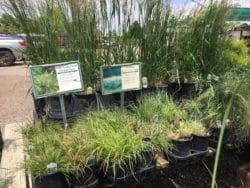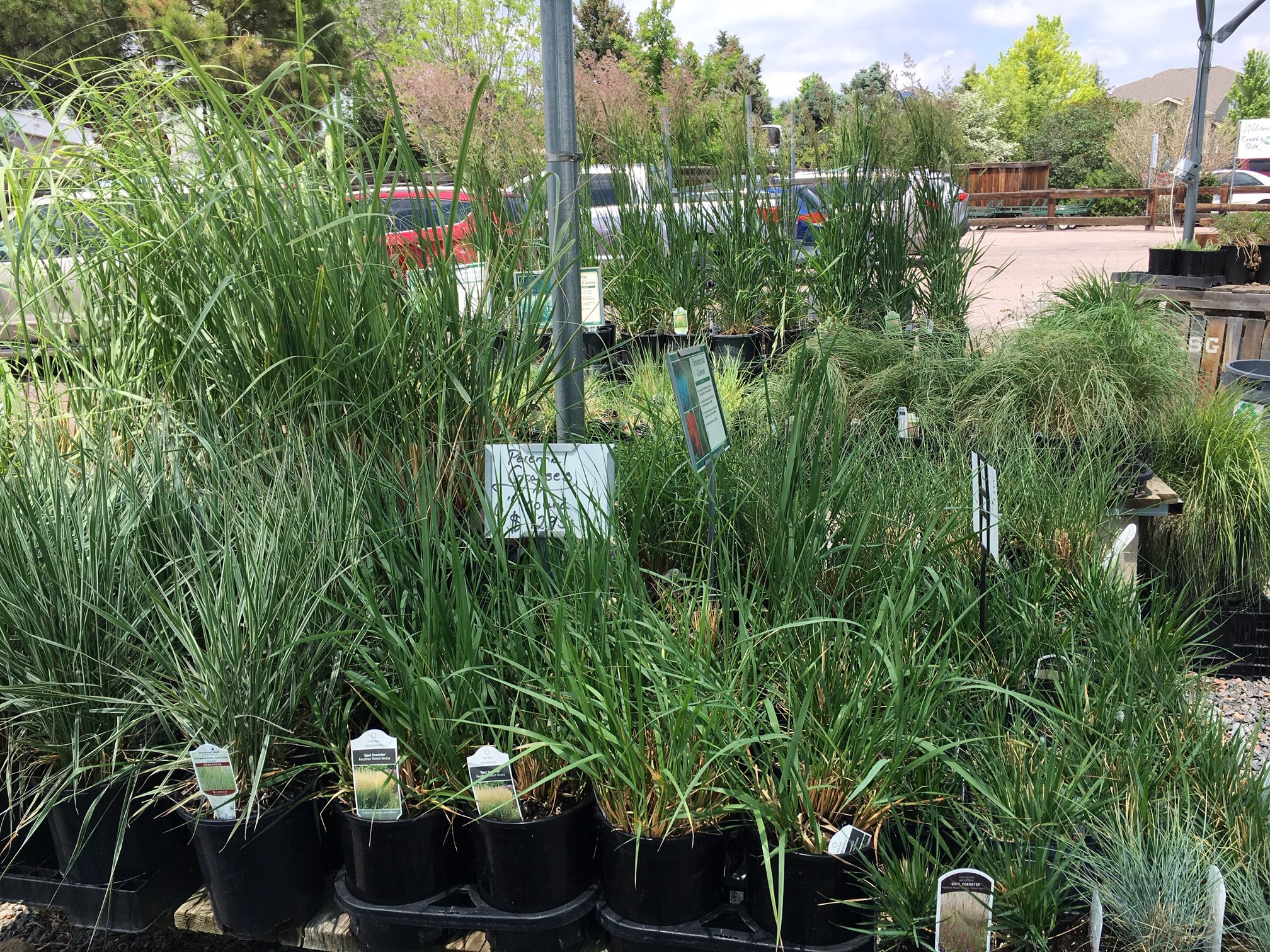Design and Care
Grasses add variety to many types of gardens adding two elements to the garden experience that are not readily obtained from many other plants: movement and sound. Grasses look well against a dark background and placed to catch morning or evening light.
Vertical Presence & Winter Interest
Grasses also add a significant vertical presence to the winter landscape and are commonly left standing until spring. the dried foliage of ornamental grasses is combustible during the winter and is likely best removed in public and commercial sites.
Temperature, Light, Planting & Care
Some grasses grow best under warm temperatures (warm season) and others in cooler temperatures (cool season). Warm season grasses would include Miscanthus, Big and Little Bluestem, Side-Oats, Switchgrass, Pennisetum and Muly Grass. Cool season grasses include Karl Forester Feather Reed grass, Blue Oat grass and Blue fescue.
Planting ornamental grasses in the spring is preferred. Container-grown grasses can be planted all season, stopping a month before first frost. Late planting of grass divisions is not recommended, particularly for warm season types.
Grasses generally grow best in three to five hours of direct sun each day. In shade, these grasses may not bloom, are often lax and tend to fall over, and may not develop peak fall color.
Most grasses can benefit from mulching and many from cutting back, usually just before new growth begins in the spring. Use hedge shears and wear gloves to prevent cuts from the razor-sharp edges of some species.
A few perennial grasses form root masses that can be very difficult to divide and transplant. Most annual types can easily be grown from seed.
Few pests bother grasses. If aphids or mites appear, spray with a strong stream of water to control the problem.
Grasses for Moderately Moist to Moist Sites
Grasses from many parts of the world are commonly used in American gardens. Many of these are from the moist climates of Asia and Europe and must be amply watered. Some natives such as switch grass (Panicum virgatum), like varieties ‘Shenandoah’ and ‘Heavy Metal’ also require regular irrigation in Colorado’s semiarid climate.
 Among the most widely used Asian grass introductions are the Maiden grasses (Miscanthus species) and their many varieties. Some, such as variegated Japanese silver grass, have been grown in America for a century and are still very popular. Miscanthus are noted for their silky flower tassels that persist into winter. New varieties have been bred for flowers that emerge well above the foliage, earlier flowering, and plants that don’t fall over. See ‘Morning Light’, ‘Gracillumus’, ‘Zebrinus’ and ‘Adagio’.
Among the most widely used Asian grass introductions are the Maiden grasses (Miscanthus species) and their many varieties. Some, such as variegated Japanese silver grass, have been grown in America for a century and are still very popular. Miscanthus are noted for their silky flower tassels that persist into winter. New varieties have been bred for flowers that emerge well above the foliage, earlier flowering, and plants that don’t fall over. See ‘Morning Light’, ‘Gracillumus’, ‘Zebrinus’ and ‘Adagio’.
Feather reed grass (Calamagrostis x acutiflora ‘Karl Foerster’) has a wheat-like look that makes it one of the showiest and most popular grasses. It grows in upright clumps lending a vertical accent. The straight, greenish flower spikes form in May to June, turn golden, then bleach tan and persist into the winter.
Pennisetum varieties like ‘Little Bunny’ and ‘Hamln’ are smaller and great for borders.
Grasses for Drier Sites
The Front Range and Eastern Plains of Colorado are part of the short grass prairie that lies in the rain shadow of the Rocky Mountains. This is a high and dry steppe climate dominated by short grasses of inches in height that include Side Oats or blue grama (Bouteloua gracilis), the state grass of Colorado. See the Plant Select variety ‘Blonde Ambition’. The area is semiarid and the average annual rainfall is 10 to 15 inches.
Grasses from the Corn belt portion of the country include Panicum Switchgrass and moving west into the Wheat belt include Big and Little Bluestem. These grasses will survive with low water applications.
Gardeners growing native gardens should understand the differences in rainfall where these grasses are native and plan supplemental irrigation accordingly. Generally, among the natives, the taller the grass, the more water the plant requires.

